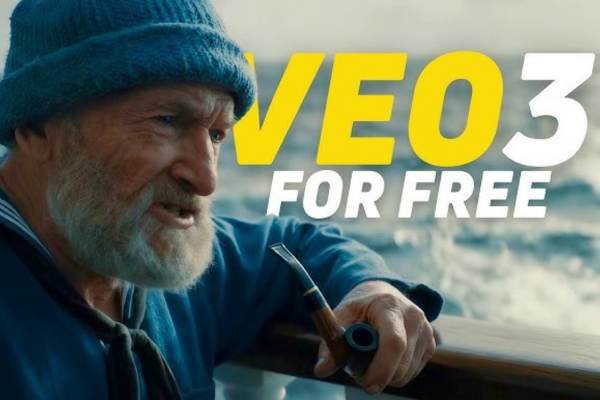
Overview Intro
Making videos in 2025 won’t call for cameras, performers, or editing knowledge. Thanks to tools like Google VEO 3, artificial intelligence lets anyone create a professional-looking video from an idea. This article will walk you through how to use Google VEO 3 step-by-step, regardless of your level of experience or content creation ability.
From acquiring VEO 3 free access to composing the ideal prompts and creating Professional AI videos, we will walk over the entire procedure in plain terms.
What is Google VEO 3?
Google DeepMind produced the sophisticated artificial intelligence movie producer Google VEO 3. Short text descriptions known as prompts are transformed into realistic or animated films. VEO 3 today provides longer scenes, greater resolution, and optional image input for even more accurate findings, with updates in 2025.
It can help you create:
• Product advertisement
• Explainer videos
• Short film story
• Trip clips
• Stories with animation
Businesses, marketers, educators, influencers, and even students will find it ideal.
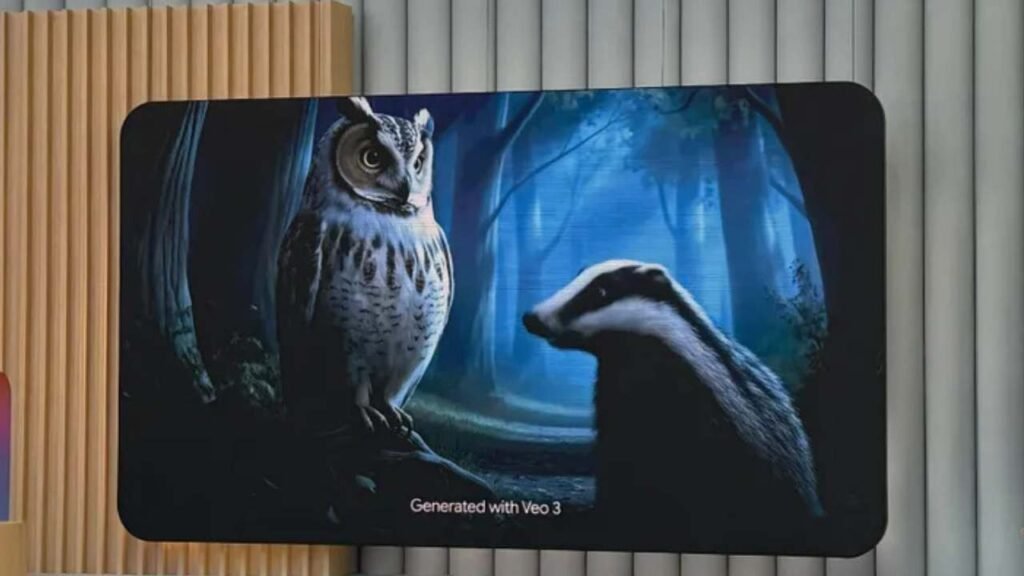
King is videos. In the digital landscape of 2025, the observation is true. From viral YouTube films and interesting Instagram Reels to high-production YouTube series and stage brand ads, video content rules how we access knowledge, relax, and decide what to buy. Making excellent video is now necessary for survival and expansion, not a choice for companies or creators.
Still, let’s face it: video creation is challenging. It demands a classy set of tools and knowledge, is costly, and time-consuming. One 30-second commercial may run lakhs of rupees and take weeks to create. Professional-level video creation has long been out of reach for small businesses, lone creators, and marketers on a limited budget, thanks to this great barrier to entry.
Up until now.
Here is the next wave of the AI revolution, poised to utterly change the video industry. Google VEO 3, the most recent and most potent variation of Google’s original text-to-video AI algorithm, is leading this charge. This is more than simply an update; it’s a step into a new era whereby anyone with an idea can produce amazing, cinematic, and professional AI videos from a basic written description.
This tool is your key if you have ever thought of making your short film, running a viral marketing campaign, or just dynamically, interestingly presenting your product. Your whole VEO 3 tutorial is contained in this book. We will walk you through exactly how to utilize Google VEO 3, investigate how to obtain VEO 3 free access, and equip you with the tools to move from a blank page to a completed video masterpiece.
From this extensive guide, you will learn:
- What is Google VEO 3, and what amazing new capabilities does it?
- a useful manual on where and how to find free access to this potent weapon.
- From prompt to final render, a thorough, methodical guide on building your first AI film.
- Advanced advice for creating cinematic shots and preserving visual consistency.
- How may your brand be developed and your audience engaged with AI-generated videos?
- Everyone may access the future of video making here. Allow us to start.

What is Google VEO 3? A Flight into Video’s Future
The third version of Google’s flagship text-to-video generative artificial intelligence model is how to operate Google VEO 3. Building on the work of its forebears, VEO 3 offers a radical advance in the quality, consistency, and control given by artificial intelligence video creation. While past models could create amazing short clips, VEO 3 is meant to generate longer, more coherent, and cinematically rich video content that challenges what was once only feasible with professional animation and VFX companies.
Why does VEO 3 represent the future of video generation?
VEO 3 creates video in high definition (1080p and beyond): with amazing attention to detail, realistic lighting, and natural motion, unprecedented realism and quality. The produced videos’ significantly more complex textures, reflections, and physics make it challenging to tell them from real-life footage or high-end computer-generated imagery.
Increase Prompt Understanding: The model understands language far more deeply than others. It can decipher your prompt’s not only what but also, it’s how. You can name moods, emotive tones, and sophisticated cinematic techniques. VEO 3 recognizes and performs on that subtlety, for instance, instead of merely “a car driving on a road,” you may prompt: “A vintage red convertible driving along a winding coastal road at sunset, shot in the style of a 1960s classic film, with a nostalgic and adventurous mood.”
Consistency was one of the toughest Issues older artificial intelligence algorithms faced. The look of a character could vary throughout consecutive frames. VEO 3 has made great progress in this field since it enables the constant appearance of humans, animals, and objects throughout several images, thereby enabling the construction of coherent tales.
For producers, advanced cinematic controls are maybe the most fascinating tool. VEO 3 brings certain controls modelled on professional filmmaking methods. Camera angles (wide shot, close-up, drone shot), camera motions (panning, tilting, dolly zoom), and even lens kinds (macro, telephoto). This lends you the authority of a virtual director.
While first-generation tools were limited to a few seconds, VEO 3 can create far longer continuous clips (upwards of a minute or more), therefore enabling the construction of more whole scenes and tales free from uncomfortable cuts.
Google VEO 3 is essentially transcending basic “clip generation” into the domain of “AI filmmaking.”
How to get VEO 3 Free Access
“How can I try it?” is the most urgent question each new, innovative AI tool must answer. Google typically releases its advanced AI models in phases to manage demand and gather feedback. Although a broad public release is anticipated, obtaining early VEO 3 free access most likely requires one of the following routes.
Most often used Google experimental tools are through Google AI Test Kitchen or Google Labs.
- What it is: Google lets individuals register to test its newest AI technologies on platforms called Google Labs and the AI Test Kitchen.
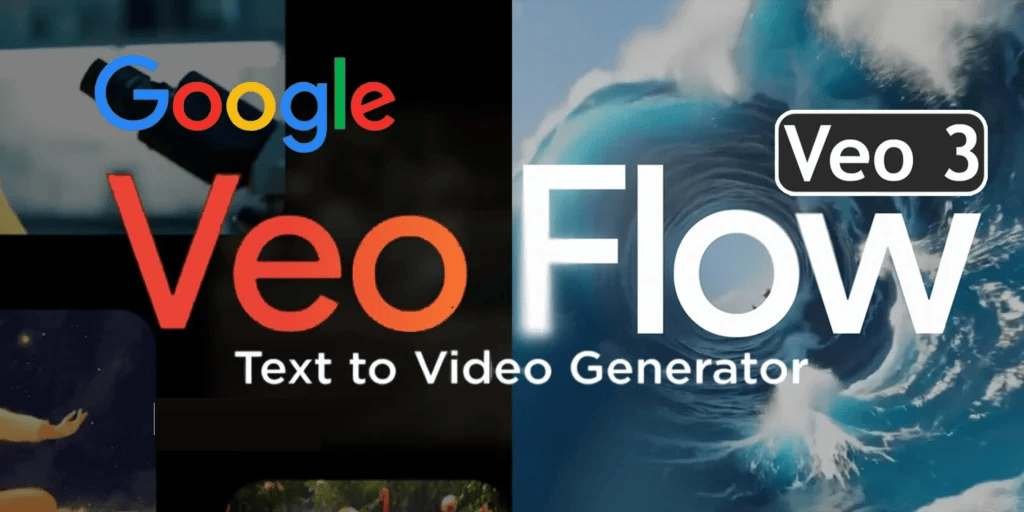
How to obtain access?
- One could say Consult the official Google AI Test Kitchen and Google Labs webpages often.
- The second is to enroll for each new video-generating model’s waitlist. Usually, early sign-ups take front stage.
- Announcements about upcoming testing chances should follow the official Google AI blog and its social media outlets.
Integration into Current Google Products: To improve their functioning, Google regularly combines its strong artificial intelligence capabilities into its current product line. Click Here to Access
- YouTube Create: VEO 3’s features will most likely be included in the YouTube Create tool so YouTubers may create personalized b-roll, intros, or even whole videos from within their workflow. Search the YouTube Create app for fresh “Magic Create” or “AI generation” capabilities.
- Google Images or photos: For personal use, a VEO 3 variant might show up there, allowing users to make animated video memories from their stationary photographs using a text prompt (e.g., “Create a short cinematic video of my last beach trip, with a happy and upbeat feel”).
- Google Workspace (Slides & Meet): One might create bespoke video backdrops for Google Meet or short animated clips for Google Slides presentations by means of a version included.
Google might release a stand-alone web-based portal where users may access the whole set of VEO 3 capabilities, same as with other generative AI tools. This would probably begin with a waitlist and a free credit system whereby every user receives a set number of free video generations per month.
Practical Advice on Right Now:
- Save the official Google AI and Google Labs websites in bookmarks.
- Subscribe to all newsletters and waitlists connected to Google’s artificial intelligence.
- Keep your Google apps (YouTube, Photos) current and search for fresh features.
Early access is sometimes about demonstrating interest and being proactive. Following these guidelines will help you, among others, be among the first to know when VEO 3 free access becomes possible.
From Text to Professional AI Video: A Step-by-Step VEO 3 Tutorial
Once you have access, it’s time to start producing. This VEO 3 course will walk you through the steps of producing your first professional artificial intelligence video.
Step 1: Get on the Platform and Know the Interface
Whether you are utilizing an integrated feature or a stand-alone website, the interface will revolve on a text prompt box. You will probably also find choices to:
- Upload a picture or video for a basic reference.
- Choose the video style—cinema, anime, photorealistic, etc.
- Select the aspect ratio—for YouTube, 16:9; for Reels/TikHub, 9:16.
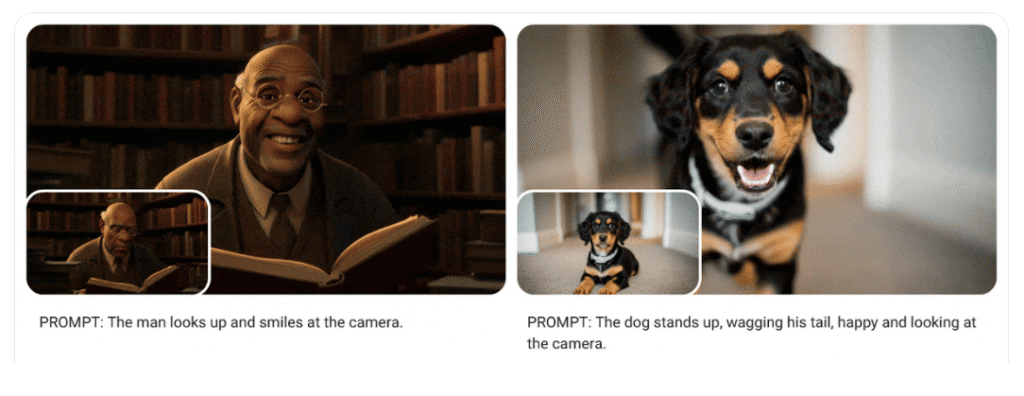
Step 2: Creating your first prompt—the basics
Start basics to grasp how the artificial intelligence understands your language. Descriptive language is the secret. Rather not just “a dog”; rather “a golden retriever puppy playing with a red ball in a sunny park.”
A good prompt consists in {Subject} + {Action} + {Scene} + {Details/Style}.
- Quick Simple Prompt Example: “A majestic elephant walking slowly across the Serengeti plains at sunrise, with a golden light.”
- “A high-end, futuristic sneaker levitating and slowly rotating against a dark, minimalist background. The sneaker is made of a white, breathable mesh with glowing blue accents.” Prompt Example 2 (Product Ad).
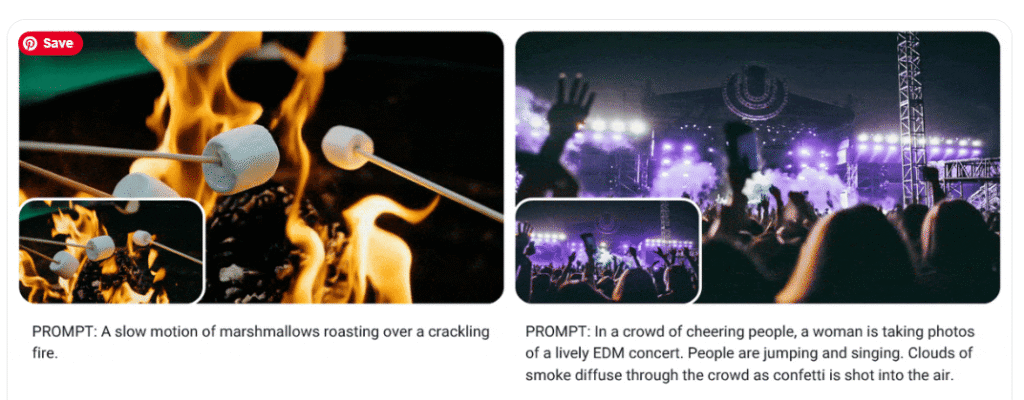
Step 3: Apply advanced cinematic prompts
VEO 3 shines in this area. Beginning to include filmmaking language into your prompts.
Angles of the camera:
- “A broad view of a humming Mumbai market during monsoon season.”
- “An incredibly close-up on a drop of rain falling from a leaf.”
Camera Motion:
- “A drone shot flying over the backwaters of Kerala, panning slowly to the right.”
- “A dolly zoom stresses a character’s startled face in a crowded room.”
Mood and style:
“A black and white noir scene of a detective looking out a rain-streaked window in his office.”
“A hyper-saturated, vivid slow-motion video of a Holi festival celebration.”
Step 4: Reference an image to guide you.
Image-to-video is among the most potent tools available. This helps you to keep consistency and realize your vision.
- Upload an image: a picture you captured, a product image, or even an AI-generated image created using tools like Midjourney or DALL-E 3.
- Prompt the Animation: Right now, your prompt will center on the action.
“Animate this image. Make the product slowly rotate 360 degrees. The background should remain the same, but add subtle, shimmering light particles floating around the product,” the Image Prompt Example says after submitting a picture of your product.
Step 5: Review, Refine, and Regenerate
Maybe your first generation isn’t flawless. The AI will very certainly offer some variants.
- Review: Examine every choice closely. What are your preferences? Not something you enjoy?
- Refine: Change your prompt if the outcome is near but not quite accurate. be. Try “make the camera movement faster and add more lens flare,” not “make it more exciting.”
- Regenerate: Create fresh sets of movies using your polished prompt.
Honing in on the ideal outcome requires this iterative process. You can download a video you adore in high resolution once you have it.
Advice and Tools for Producing Expert AI Video
Consider these ideas to obtain professional artificial intelligence videos:
- Use Simple Prompts; keep it within 25 words.
- Be visual and include elements regarding background, colors, or motion.
- Use mood or emotion: happy, calm, dramatic, frightening
- Use Style Tags: cartoon, realistic, cinematic, anime
- Add Time & Location: sunrise, sunset, woodland, space
Learning how to use Google VEO 3 transcends simple inspiration. These are some pro tips to improve your work.
Generate brief clips (5–10 seconds): With consistent prompts, and then sew them together with a basic video editor such as CapCut or Adobe Premiere Rush to produce a longer narrative with several scenes.
- Scene 1 prompt is “A wide shot of a woman hiking up a mountain, reaching the summit at sunrise.”
- Scene 2 prompt is “A close-up shot of the same woman at the summit, smiling as she looks out at the view.”
Maintaining Consistency: Create a thorough description and save it to have a character or object look the same across several clips. Apply that precise description to every cue about that character. For instance, “A character named ‘Rohan,’ a man in his late 20s with short black hair, wearing a blue denim jacket and glasses.”
Consider sound design: VEO 3 will create silent videos. Including sound gives the last, professional touch. Using a video editor, add:
- Music: Select tunes for your video’s tone.
- To make your film seem more realistic, add minute sounds like footsteps, wind, or a car engine.
- Record a voiceover to narrate a tale or defend your offering.
Describe the unseen as well as what is in the frame. Explain the atmosphere and feeling. The last look and feel of the film will be much influenced by words like “serene,” “chaotic,” “nostalgic,” “futuristic,” and “dreamlike.”
Use Cases: How to work Google VEO 3 lets you create what?
Popular methods of using VEO 3 are these:
for Companies
- Brand videos and product commercials
- Promotional computer-generated imagery clips
Regarding Creators
- Shorts, reels, and TikHub videos
- GI art and narrative films
Regarding Education
- Visual guides
- Concepts in language or science applied
For enjoyment
- Children’s animated tales
- Personal welcomes or birthday movies
In summary, you are a video creator now.
The release of Google VEO 3 represents a turning point in the evolution of content production. Hollywood studios or big advertising companies are no longer the only places with great capability to create exquisite, professional, and cinematic films. Right now, it’s at your fingertips just waiting for your ideas.
This technology distributes innovation more widely. Delhi’s small business owner may today create a product advertisement with the same visual appeal as a worldwide brand. An instructor can make a minute-long animated instructional film. Without a single piece of camera equipment, a novice filmmaker can storyboard and see their whole movie.
Following this VEO 3 tutorial will have taught you the foundations of how to use Google VEO 3. You grasp the ideas of effective prodding, the need for cinematic language, and the process from concept to finished output. The entry barrier has been taken down. Your imagination is the sole restriction still applicable.
What narrative, then, will you recount?
All set to start the revolution on videos? Start today looking for Google VEO 3 free access and bring your concept to life!
Frequently Asked Questions (FAQ)
Q1: Can one utilize Google VEO 3 entirely free?
Ans: It is anticipated that upon launching, there will be a substantial free tier, most likely providing a monthly credit count for video output. Google will most likely provide expensive membership plans, including additional credits and advanced capabilities for heavy or business use.
Q2: Using VEO 3, what longest video I could produce?
Ans: VEO 3 should produce single, continuous clips spanning more than one minute in length. Generating several clips and stitching them together—a method known as prompt chaining—allows you to produce films of any length.
Q3: Can I use my produced movies for commercial purposes—for paid commercials or on my company website?
Ans: Often, sure. Most generative artificial intelligence systems provide you with created material, complete with commercial rights. To guarantee complete compliance, it is always advisable, therefore, to review the terms of service for VEO 3 as they are published.
Q4: In what ways might Google VEO 3 differ from existing artificial intelligence video solutions, such as Sora from OpenAI?
Ans: Leading models in the next generation of AI video are VEO 3 and Sora. Both seek regulated, consistent, and high-fidelity video creation. Although they have the same objectives, their artistic outputs, prompt interpretation, and feature sets will differ. Usually, the finest one will rely on the needs and artistic inclination of the customer.
Q5: VEO 3 requires what type of computer or hardware?
Ans: You don’t need a powerful machine. VEO 3 is a cloud-based tool; hence, all the heavy processing is done on Google’s servers. Almost any laptop or desktop computer can be used with a current web browser and a steady internet connection.



